Ophiophagus
Pronunciation: /ˌō-fē-ˈäf-ə-gəs/
If you’ve ever delved deeper than the very surface of any non-domestic animal hobby (i.e. salt water fish, birds, insects etc.) you have very likely found yourself amongst people throwing out Latin terms as part of their regular vocabulary. This can be a little overwhelming and confusing to the average person, (I’ve been there) but since all animals are assigned only one unique Latin (scientific) name, it is a way for nerds like myself to identify a species of a certain animal that may literally have a dozen different common names. For example, if I say the name Agkistrodon piscivorus, (its really hard to pronounce the italics) none of you will have any idea what the (bleep) I’m talking about. 🙂 However, the trouble is that this same animal also goes by the name Water Moccasin, Cottonmouth, Trap Jaw, Water Adder, Gaper and Stump-Tail – just to name a few. Many animals may even share the same common names creating even more confusion. Rest assured that if someone starts rattling off Latin names in your presence, you are fully entitled to roll your eyes and walk the other way, but perhaps now you can appreciate the logic behind our weirdness.
So why do I bring up the word ophiophagus??? Well, in my opinion, it is a word that means something to all of us, no matter who you are. The literal translation of the word, means “snake-eater”.
Personally, I can think of at least 100 things that I would rather put into my mouth than a snake, but to each his own. Some people, commonly known as rednecks, the culinarily curious, or “Survivorman” will openly demonstrate this behavior, but thankfully, most of us tend to nourish ourselves with poultry, beef, pork and other more practical and sustainable sources of protein. There are however, several members of the animal kingdom that make a living from consuming snakes. Birds of prey, members of the mustelid family (weasels, badgers, skunks etc.), and mongooses all come to mind. There is, however, only one animal “amongst us” with our word of the day listed in it’s scientific name. It is a serpentine kingpin, the big daddy of all venomous snakes, the iconic subject of legend and lore, Ophiophagus hannah. If you haven’t guessed it already, it is the King Cobra, native to Southeast Asia. This impressive animal can reportedly reach lengths nearing 20 feet, and being capable of lifting a third of it’s body off the ground, could quite feasibly bite the average NBA player full in the face! They earned their scientific name, as they feed almost exclusively on other snakes! Not wanting to incite fear in my audience, I feel compelled to add that like most snakes, even the King Cobra would rather make a quick escape than face even the smallest Homo sapien (see what I did there?) 🙂
So what do snake-eating snakes have to do with you? Well, depending on who you are, probably quite a bit. I will focus on two distinct groups of people, and I am fairly confident you will find one of these groups to fit into:
The General public
As a “normal” person, you probably either like, marginally tolerate or hate snakes. We have ALL heard the term, “The only good snake, is a dead snake”! I am here to testify that this line of thinking is not only false, but asinine and dangerous. Every year, hundreds of thousands (if not a lot more) of snakes are needlessly and intentionally killed. Sure, some of them had rattles on their tails or were otherwise dangerous, and were found in close proximity to homes, but most were completely harmless and killed in their own environment. Worse yet, how many of the harmless snakes killed, were “snake-eaters”? Did you know that the many varieties of King snakes that live in the USA, eat other snakes regularly? Guess what else…they even eat venomous snakes like rattlesnakes, Copperheads, and Water Moccasins!!! Many snake eating snakes are either tolerant or immune to snake venom, and can easily overpower a sluggish rattler and consume it with no problem. It makes sense that if King snakes are killed, you will by default, end up with more venomous species to contend with. I guess all I would ask, is that before you kill any snake, think for a moment about why it is there and how it might benefit you to keep it around or at least move it to a preferable place instead.
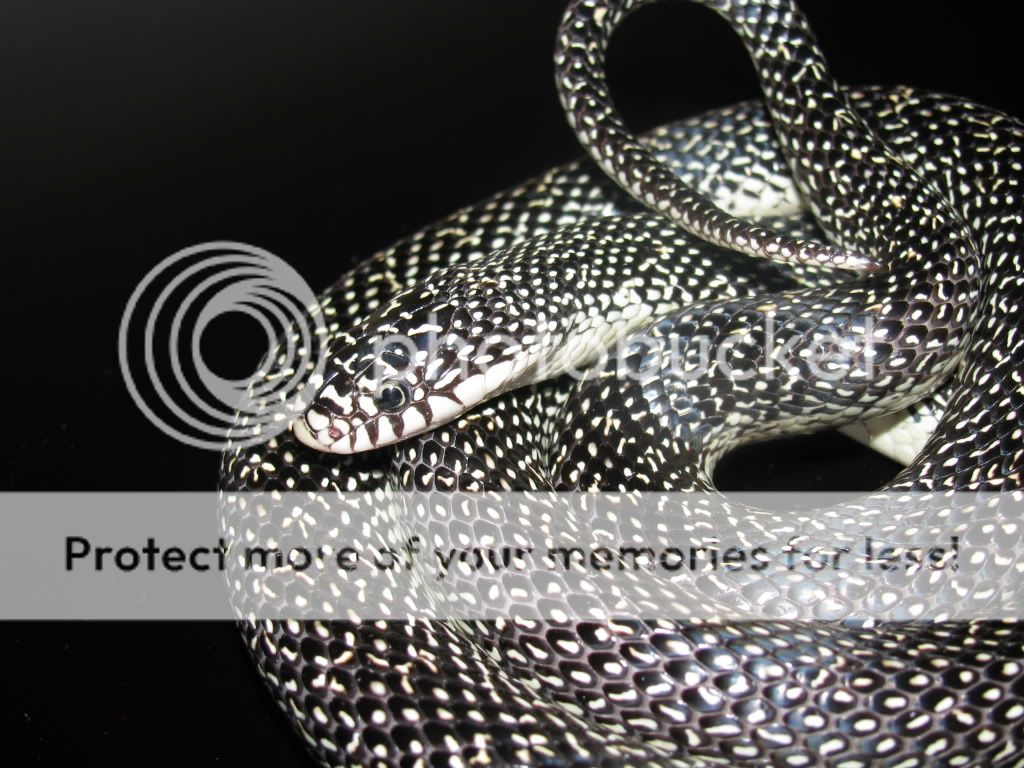 Above is an example of a captive born Speckled Kingsnake. Like most Kingsnakes, they are generally very friendly and are commonly available in the pet trade.
Above is an example of a captive born Speckled Kingsnake. Like most Kingsnakes, they are generally very friendly and are commonly available in the pet trade.
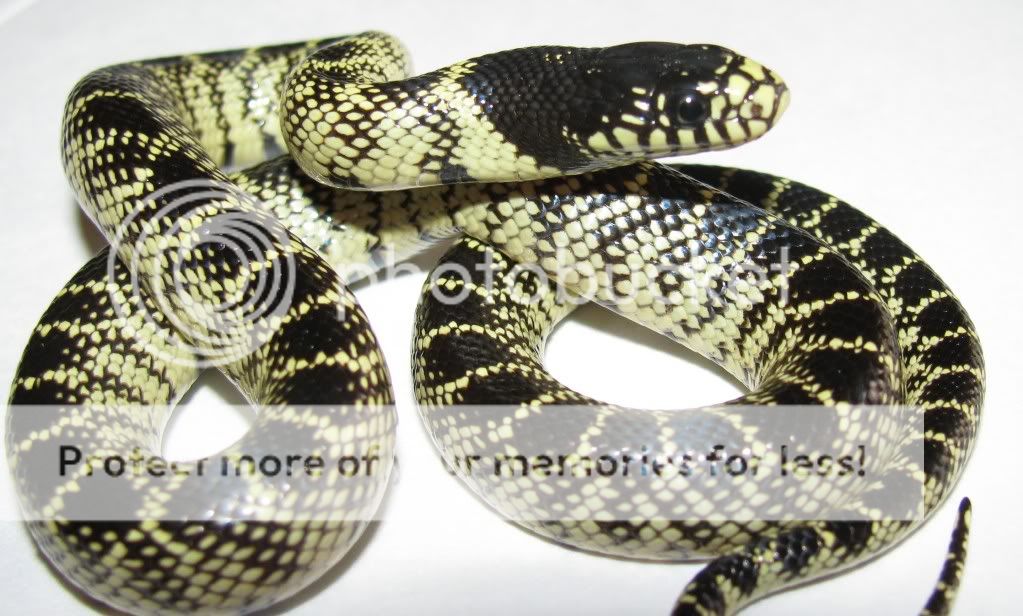 The juvenile critter above is a wild Desert Kingsnake we found in Arizona.
The juvenile critter above is a wild Desert Kingsnake we found in Arizona.
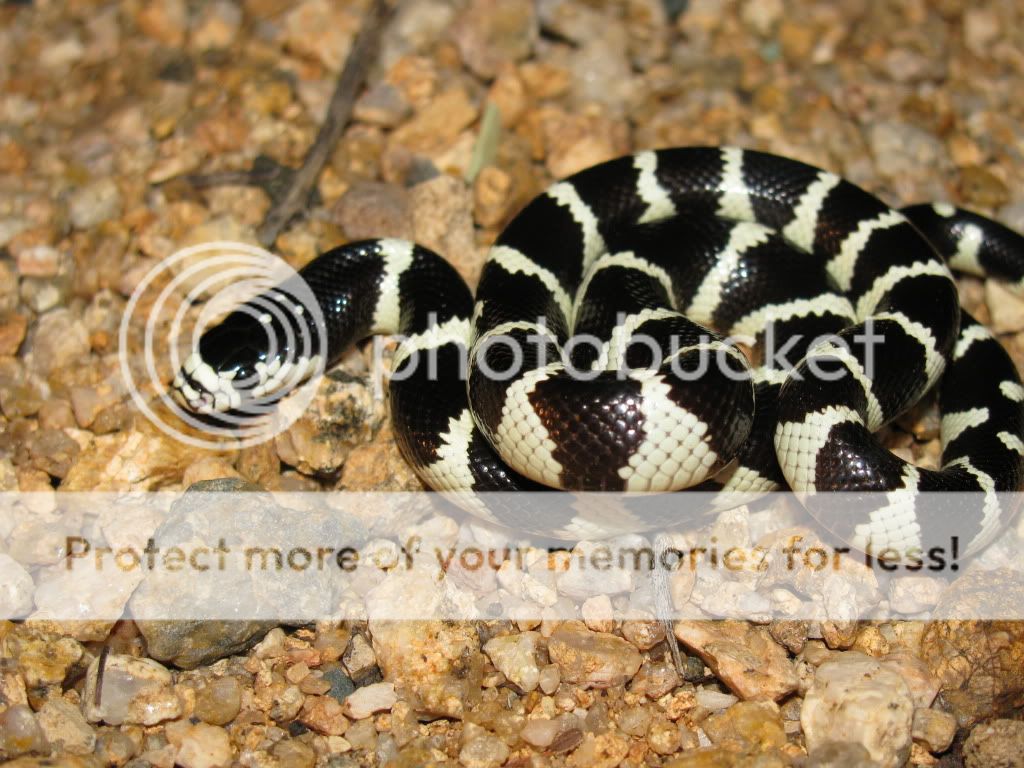 Although the above animal is commonly called California Kingsnake, this species ranges throughout many Western states. This individual was found in Arizona. Like many harmless snakes, Kings will shake their tails when threatened, hoping to mimic the sound of a rattlesnake when their tail vibrates against the ground or leaves. Tragically, the mimic works so well, that many folks believe these are baby rattlesnakes and quickly kill them.
Although the above animal is commonly called California Kingsnake, this species ranges throughout many Western states. This individual was found in Arizona. Like many harmless snakes, Kings will shake their tails when threatened, hoping to mimic the sound of a rattlesnake when their tail vibrates against the ground or leaves. Tragically, the mimic works so well, that many folks believe these are baby rattlesnakes and quickly kill them.
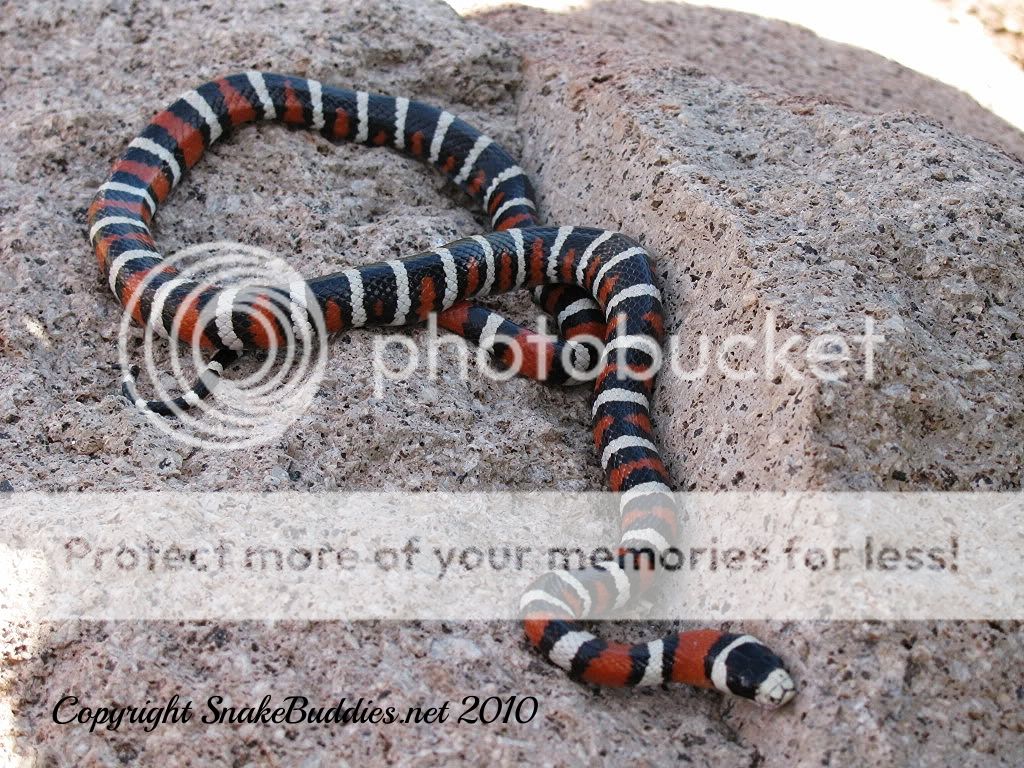 Arguably, some of the most beautiful Kingsnakes, are the Mountain Kings found throughout the Southwest United States. This animal was found in Southern Utah. As you might have noticed, these snakes loosely resemble the venomous Coral snakes. (I may write another post to demonstrate the similarities and differences.) The helpful rhyme goes “Red next to black, friend to Jack. Red next to yellow, kills a fellow. Regretfully, these snakes are also regularly dispatched by fearful humans who think these are venomous.
Arguably, some of the most beautiful Kingsnakes, are the Mountain Kings found throughout the Southwest United States. This animal was found in Southern Utah. As you might have noticed, these snakes loosely resemble the venomous Coral snakes. (I may write another post to demonstrate the similarities and differences.) The helpful rhyme goes “Red next to black, friend to Jack. Red next to yellow, kills a fellow. Regretfully, these snakes are also regularly dispatched by fearful humans who think these are venomous.
Reptile Enthusiats
Hey, there might be a few of you out there that do enjoy snakes to the point that you want to keep them in your home. Surprising or not, there are lots of us that do. What I think us snake-lovers need to keep in mind from a hobby perspective, is that we may decide one day that we really want to keep a predominately ophiophagus reptile. Obviously most King snakes will readily take mice, but there are several serpents, like the King Cobra, that either prefer, or quite simply need to eat snakes to stay healthy. Experience (not mine) has shown that most King Cobras, for example, that are painstakingly switched to feeding on rodents, end up living significantly shorter lives. Coral snakes and some types of Ringneck snakes also fit in to this category. I would suggest, that if you truly desire to keep a snake-eater, that you also consider your willingness and ability (conscience-wise or cost-wise – it’s expensive!) to feed it the critters it needs. If you can’t see yourself feeding a beloved snake to another snake, perhaps a different pet would be more appropriate.
In summary, we’ve all gotta eat, and that includes nature’s creepy-crawlies. If there is ever a Latin term created for those that consume copious amounts of Mountain Dew and Doritos, I will surely fit into that group. For now, however, I’m just another guy who’s passionate about snakes and hopes to help educate and inform the masses that these sometimes fear-inciting critters (even the “dangerous” ones) do have inherent redeeming values that may very likely not be recognized by our grandchildren if we continue to cause them harm. May we all try a little harder to develop an appreciation for all forms of life and learn to find more practical solutions for our coexistence.
Best regards,
Snake Buddies
Jamison Hensley


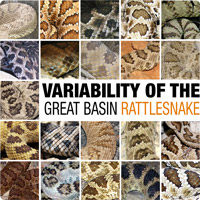
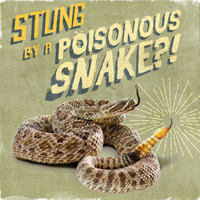



Great article. I love your passion. My favourite is the Cobra snake and although the King cobra isn’t a true cobra I’d love to come across it as well one day.